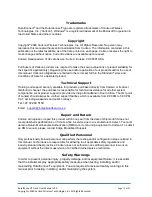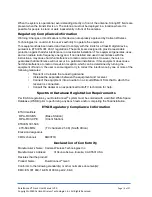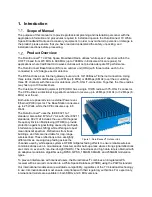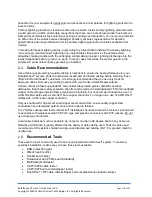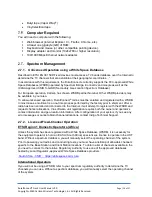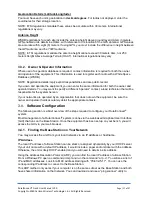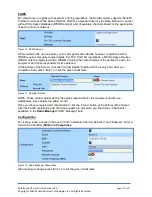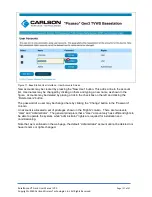
RuralConnect® Gen3 User Manual V1.0
Page | 12 of 57
Copyright
©
2020 Carlson Wireless Technologies, Inc. All Rights Reserved.
2. System Planning
Proper Handling
You must follow precautionary measures when handling RuralConnect
®
devices. Improper handling
of your equipment may cause damage and void your warranty. The electronic components of the
RuralConnect
®
equipment are sensitive to electrostatic discharge (ESD). Whenever handling the
equipment, always use adequate ESD protection, such as a grounded anti-static wrist strap. It is
also important to avoid the use of conductive tools, metal or otherwise. Where a plug on the power
supply cord is used as the disconnect device, the socket-outlet must be easily accessible.
Grounding
Grounding is the most important aspect of any electrical system.
It is recommended, and often required by law, to hire a certified electrician to install any required
electrical infrastructure.
For dissipation of hazardous energy, a ground is a low impedance electrical connection to the earth.
Grounding the RuralConnect
®
is very important for safety reasons, as well as protecting the system
from damage due to lightning and/or static charge/build up. Since lightning strikes and surges are
high in frequency, current, and voltage, the installation should use short, straight ground wires (not
coiled or looped). For optimal electrical conductivity, it is best to use the largest diameter ground wire
the ground connectors will accept. We recommend using a solid copper wire no smaller than eight
gauge.
It is required that the connection of the equipment protective earthing conductor to the installation
protective earthing conductor is made.
The impedance of your grounding should never exceed five Ohms. Carlson recommends
maintaining a ground with less than three Ohms.
An earth ground can be achieved, for example, using a utility company ground, grounding rod(s),
well casing, and/or cold-water pipes constructed of continuous metal.
A note of caution
: sometimes repaired and/or extended metal cold-water pipes include PVC
sections hidden behind drywall. PVC will disrupt conductivity and render the pipe unacceptable as a
ground.
Conductivity is often poor in desert areas, so multiple ground rods may be required (preferably
bonded together to make a suitable connection). Undesirable grounds include, but are not limited to:
sprinkler pipes, PVC pipes, conduit, and buried wire.
Never
use an unverified ground.
Caution must be taken to avoid electric shock. Prior to disconnecting a grounding connection,
always disconnect all power sources and cables from the system.
Lightning Protection
Poorly grounded lightning protection is the same as having no protection at all!
Lightning is one of the most dangerous and most common natural hazards for outdoor wireless
systems such as the RuralConnect
®
. It is essential to install and maintain adequate lightning


